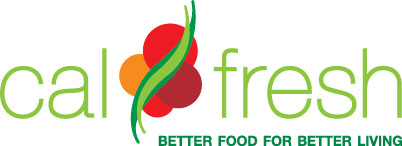CalFresh: An Underutilized Program with a Big Impact
Celebrating CalFresh Awareness Month
By Molly Rosenthal, Healthy Mendocino Coast Coordinator
As COVID-19 spread throughout the country early last year, we saw much of the progress made toward closing health disparities backslide, as gaps widened between race, class, and gender[i]. Pre-pandemic, food insecurity, or the lack of access to food due to limited financial resources, was at the lowest it had been in 20 years, with 1 in 9 individuals and 1 in 7 children living in a food-insecure household[ii]. As a result of the economic recession brought on by the pandemic, estimates of food insecurity more than tripled last spring[iii].
Black and Hispanic households have been disproportionately affected, according to research by the Institute for Policy Research at Northwestern University collected between April 23rd and May 19th of last year. This research shows that 36 percent of Black households and 32 percent of Latino households said they were food-insecure during that time period. That’s compared to 18 percent of white households.
CalFresh, known federally as the Supplemental Nutrition Assistance Program (SNAP), expanded its benefits to respond to the growing food insecurity rates, yet remains one of the most underutilized public benefit programs in California. Our state ranks fifth lowest in eligible populations enrolled in a supplemental food assistance program, just ahead of Arizona, Utah, North Dakota, and Wyoming.
“This is a benefit you pay into, just like the roads you drive on,” Said Lily Caravello, Program Administrator of the Mendocino County Health and Human Services Advocacy and Collaboration Team. “People should use it.”
Enrollment & Funds
According to Caravello, just 70% of the eligible population in California is enrolled, and just 19% of eligible seniors. However, low senior enrollment is an issue that is not unique to our state. The top state for senior participation is Oklahoma, with only 32% of their eligible seniors enrolled.
This discrepancy in part can be attributed to the small benefit allotment many seniors receive from CalFresh because their Supplemental Security Income amount places them too high on the CalFresh income bracket. Eligibility workers often help seniors through the registration process only to see them leave their benefits on the table, Caravello states.
“I think they applied because they were feeling desperate and hungry and that amount wasn’t going to meet their needs, and they have so much guilt around taking a benefit they don’t think they deserve, or around taking a benefit away from someone else,” said Caravello. “They’ve been paying taxes their whole life; they definitely deserve it.”
It is a common misconception that accepting CalFresh benefits will take benefits away from someone with much greater need, however that is not how the program functions. CalFresh funds are allocated to the state almost exclusively through the USDA Farm Bill. A small portion is dedicated to administrative funds for eligibility staff and outreach work which the County hands out in grants to 17 community-based organizations throughout the county. The rest is earmarked for benefits. There is NO cap on how many CalFresh benefits can be dispersed to our state. In fact, if we don't use it, we lose it.
“California is given money every year to enroll eligible residents, and every year we end up sending money back,” says Caravello.” This decreases the amount we receive the following year in administration costs and in benefits. It is not helping anyone to send this money back.”
Despite the CalFresh advocacy and outreach work underway county-wide to sign up as many people as possible, the paperwork and deadlines required for maintaining enrollment present huge barriers to keeping up the numbers. Recipients without a fixed income are required to submit regular statements and semi-annual reports and often experience lapses in benefits due to late paperwork or a missed deadline.
Despite the recent rises in food insecurity, Caravello states that new CalFresh applications have not increased as dramatically as one would think during the pandemic. However, the County has seen less people falling off in the last year and have experienced faster application processing times, largely due to more applicants qualifying for expedited benefits and the electronic filing system through GetCalfFresh.org bypasses the postal service.
The virtual portal allows recipients to file reports online, which for some makes it easier to avoid gaps in their benefits. Additionally, application assisters are available at multiple community organizations across the county to help residents apply over the phone. The time to apply for CalFresh benefits is now, as the overall benefit allotments have increased significantly for all recipients throughout the course of the pandemic, even those currently receiving the maximum amount.
Positive Impact on the Household and Community
In Mendocino County 7,114 households (or 12,188 individuals) have greater access to food through CalFresh. Between 2015 and 2019, 61.2% of households with children in Mendocino County were recipients of the program.
“People often picture a single homeless person as being on CalFresh and certainly many recipients are, but they are smaller percentage,” says Caravello. “Most CalFresh households are working, and 80% of them include a senior, a disabled person, or a child.”
Unlike cash aid, commonly referred to as “welfare”, CalFresh benefits can only be used on food and groceries. This support is essential to keeping families above water, and to helping households stretch their monthly budgets so they are not faced with the impossible choice between putting dinner on the table and paying for electricity. The program exists to lift the quality of life for many low-income families through improved access to food, and as a result stimulates local economies. In fact, every $1 in CalFresh benefits, generates $1.79 in local economic activity.
If you are very low income, you may spend all your money on non-taxable expenses such as food and rent. CalFresh frees up additional money in a family’s budget to spend on items that are taxable, funneling those dollars into the economy. Additionally, EBT is accepted at most small grocery stores, markets, and co-ops that employ local workers and stock local food. In turn, CalFresh dollars spent at these establishments are diverted into the pockets of our local workforce and farmers.
Thanks to the Market Match Program, CalFresh recipients can support farmers directly while stretching their food dollars even further. Market Match will contribute one dollar for every CalFresh dollar an individual spends at one of the seven farmer’s markets in Mendocino County, creating an opportunity for the cardholder to double their budget for fresh, local foods.
Outreach and Education
To boost enrollment in CalFresh, Caravello believes it is essential for individuals and community-based organizations to work together to educate the public about eligibility and reduce the stigma of the program.
It is common for others to pass judgments on what CalFresh recipients purchase with their benefits. Speaking generally, Caravello says that one may judge someone for using their EBT card to purchase a case of soda, but would never think to cast the same criticism on someone paying for the same item with their own money.
While a component of the program’s mission is to promote access to healthy foods, it was never designed to meet all a household’s nutritional needs (afterall, "S" in SNAP stands for "supplemental") and we live in a country where the healthy choice is often the least cost-effective. A comprehensive review of 27 studies found that unhealthy diet costs about $1.50 more per day than a healthy diet.[iv] While that cost is trivial in relation to what we spend on medical care for diet-related disease, that additional cost could be a burden to a very-low income family.
“Life is hard and we can’t always be expected to make the best choice every time. It’s just hard,” said Caravello.
A small portion of the program's funds are allocated towards nutrition education for CalFresh eligible populations. Bhavvy Ducharme manages CalFresh Healthy Living, Mendocino County’s nutrition education program that focuses on implementing strategies or interventions to help the CalFresh target audience establish healthy eating habits on a budget and a physically active lifestyle, and to prevent or postpone the onset of nutrition-related chronic disease, such as obesity.
With CalFresh funds, the County supports community organizations implementing an array of programs centered around diet and physical wellness. For instance, Ukiah Unified School District provides Harvest of the Month/Los Cosecha del Mes vegetable and produce selections to their students. Round Valley Indian Health Center developed a community garden that grows fresh fruits and vegetables.
“We also work within the community to institute system-wide changes around policy, systems and environments,” said Ducharme. “In this way we work toward food security for all, smarter lunchrooms for schools, and environmental changes to institutionalize healthier living and eating where we live, learn, work and play.”
Visit the Healthy Mendocino CalFresh page for more information
Apply For Benefits: GetCalFresh.org
Click here to find application assistance in your community


